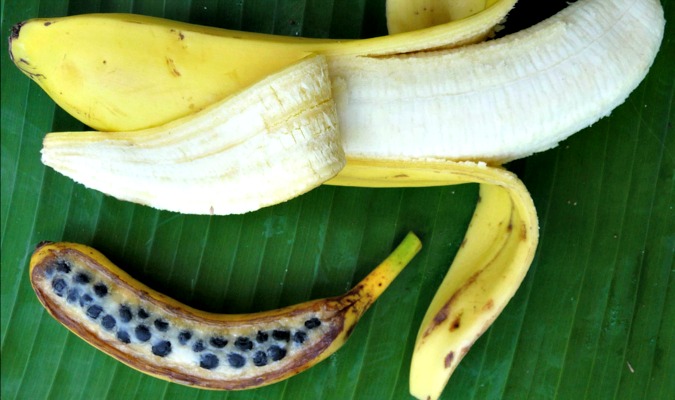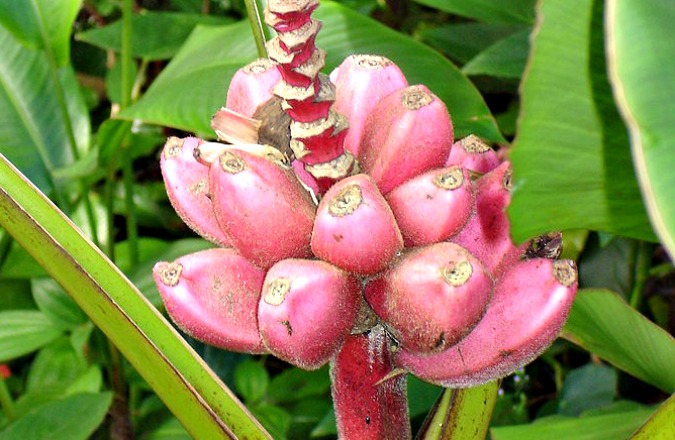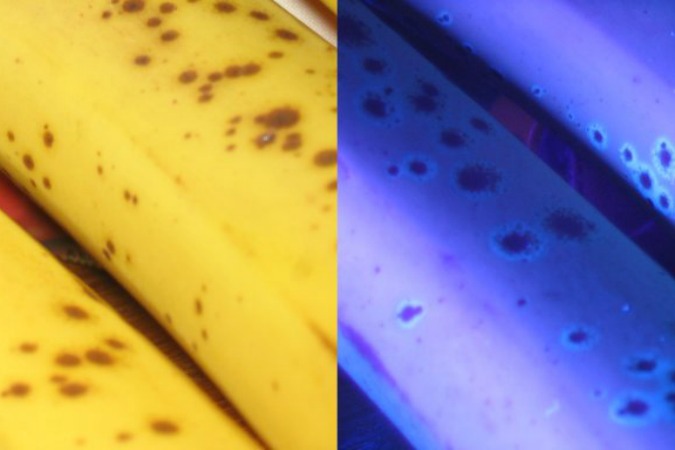When you think of a banana’s anatomy, chances are you don’t consider the term “leathery berry” or “finger.” That’s because you haven’t been thinking about banana anatomy enough in your day-to-day life; we’ll forgive this blasphemy and teach you a thing or two about the anatomy of a banana!
Bananas are a starchy, sweet botanical berry (yes, it’s a BERRY!) and edible fruit that come from flowering plants aptly name the banana plant.
The banana plant grows from a “corm,” which serves as a sturdy underground banana plant stem to survive harsh weather conditions, like a drought or extreme cold. It is essentially the bulb of the banana plant, although they are built of solid tissue vs. the layered scales of a bulb. A cluster of bananas is called a “hand,” and a single banana is called a “finger,” which is a concise yet mildly unappetizing way of describing their growth patterns. Each hand consists of about 10 to 20 fingers.
The outer layer of the banana, best known as the peel or skin of a banana, protects the soft inner portion of the banana. In between the peel and the soft fruit in the anatomy of a banana are thin membranes called phloem bundles. The phloem bundles are the part of banana anatomy that transports sucrose (sap) and other soluble organic compounds. Essentially, the phloem bundles grab sap made through photosynthesis, and bring it to parts of the banana that do not have photosynthetic properties. In some ways, this part of banana anatomy mimics the way our veins and arteries carry blood through our bloodstream! The fibers of phloem bundles in the anatomy of a banana can be used to make fabric, paper, or baskets.
Wild banana anatomy is drastically different than the typical banana anatomy we are accustomed to in our everyday lives.
The wild anatomy of a banana consists of mostly large, inedible seeds surrounded by some starchy pulp: not exactly the consistency we are looking for in a grab-and-go fruit.
 The above photo of wild banana anatomy is just the tip of the iceberg: there are many variations of banana anatomy! Take, for instance, the Musa velutina, or the hairy pink banana:
The above photo of wild banana anatomy is just the tip of the iceberg: there are many variations of banana anatomy! Take, for instance, the Musa velutina, or the hairy pink banana:

This adorable species of seeded banana has fruits 3 inches long (SQUEE!), covered in pink skin with vellous “hair.” The banana anatomy consists of edible fleshy pulp, and a multitude of seeds that are extremely hard- like chip-your-tooth hard.
Through years of scientific breeding and testing artificial selection, mutations would arise that were actually beneficial to the edibility of banana anatomy.
The domestication of the banana meant that the the wild banana would need a sleek new physique and new banana anatomy to ap-PEEL to the average grocery shopper. The Cavendish banana- or Musa acuminata– emerged as the front-runner for the most consumer-friendly banana anatomy. The Cavendish banana anatomy is soft and sweet, with small, sterile seeds in the middle of the banana, promoting the overall aesthetic and edibility of the fruit.
The skin of a this domesticated banana goes through an artificial ripening process to give it the quintessential bright yellow color we associate with a nice, ripe banana at the grocery store. Without this process, the Cavendish banana anatomy starts as a green-yellow color and ripens to brownish-yellow. The coolest part about the anatomy of a banana ripening process: ripened bananas fluoresce in BLUE when exposed to UV light! This fluorescence depends on the chlorophyll breakdowns in the banana peels: green, unripe bananas do not have the same fluorescence as their ripe counterparts. The same decreased fluorescence occurs with over-ripened bananas.

Why is fluorescence even a thing in banana anatomy?
According to a 2010 study called “Blue Luminescence of Ripening Bananas,” there are two suggestions:
- The fluorescence actually helps some animals find the perfect banana ripeness! Because some animals have a large field of UV vision, the fluorescence on the banana peel seems to correlate with this ability, allowing these animals to see a vivid shade of blue when looking for the best, most edible bananas.
- The FCC’s (fluorescent catabolites of chlorophyll, or intermediates of chlorophyll breakdown) in the banana peels may be related to more important roles in the internal world of banana anatomy, not only just for the breakdown of chlorophyll.
Banana Anatomy Health Benefits
Literally every aspect of banana anatomy is edible. The banana peel, although fluorescent, is completely edible. In fact, in many parts of the word, it’s eaten as frequently as the fleshy interior! A banana peel contains vitamins B6 and B12, magnesium, potassium, fiber, protein, and other compounds that are beneficial to health. Because the banana peel is not as sweet as banana flesh, it is usually served cooked, boiled, or fried.
As far as the interior pulp of the banana, it seems that the anatomy of a banana is chock-full of anti-oxidants and healthy content. One of the most talked-about positive attributes of banana anatomy is its high potassium content. Potassium helps your nerves function, heartbeat stay regular, move nutrients into cells and waste products out of cells. The mineral can also help balance blood pressure by negating some of sodium’s harmful effects.
There are many other aspects of banana anatomy that are great for your health! One banana can provide almost 10% of a daily fiber requirement, making them great for regularity and helping to curb food cravings. Bananas also contain Vitamin A, which improves and maintains vision, and vitamin B6 is essential for great sleep, weight loss, and protects against type 2 diabetes.
As you can see, banana anatomy is not for the faint of heart; it is a broad topic with many different compelling directions to dive into. You’ll never look at the anatomy of a banana the same way again!
Source: Study, Source: Banana Seeds, Source: Banana Facts, Source: Banana Nutrition, Source: Potassium, Source: Bananas



